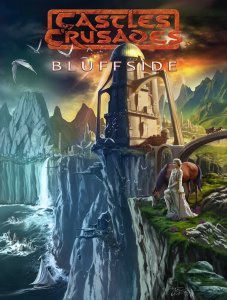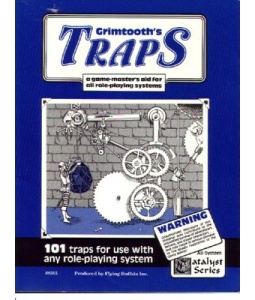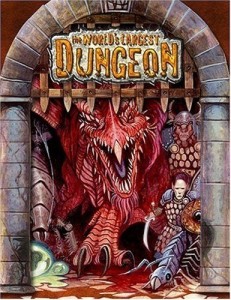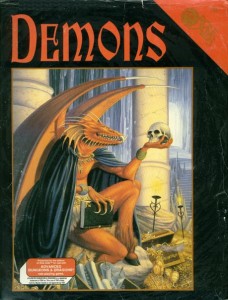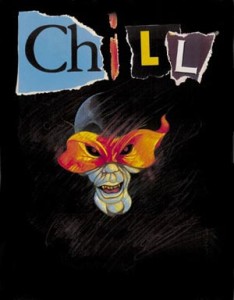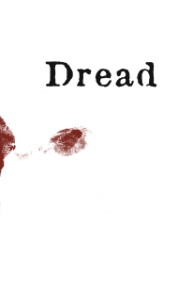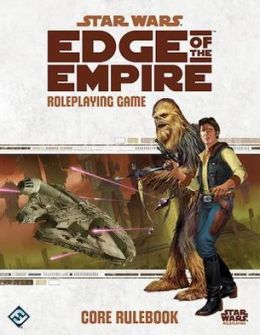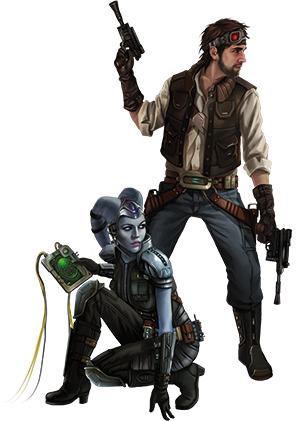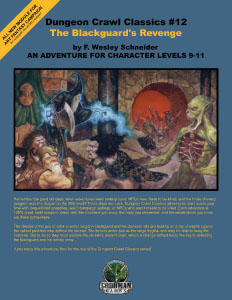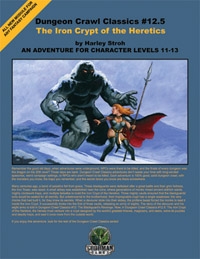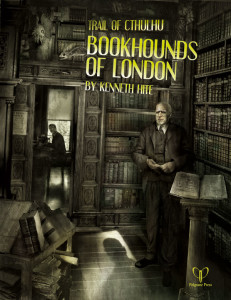 The Gaming Convention season is almost over. There are going to be some smaller and regional conventions that happen throughout the year but the big season is the summer with Origins and Gen Con. I wanted to talk about the best convention games, but there have been so many great ones that it is hard to think of the best. But when it comes to the worst gaming experience at a convention for me it is not even close. At Origins a few years ago I played in a game of Colonial Gothic that failed in so many ways, all because of the GM.
The Gaming Convention season is almost over. There are going to be some smaller and regional conventions that happen throughout the year but the big season is the summer with Origins and Gen Con. I wanted to talk about the best convention games, but there have been so many great ones that it is hard to think of the best. But when it comes to the worst gaming experience at a convention for me it is not even close. At Origins a few years ago I played in a game of Colonial Gothic that failed in so many ways, all because of the GM.
Colonial Gothic was entered in the ENnies and I was a judge that year. I had played it with some local friends and it did not go well. The rules as we understood them made success very difficult even if we min-maxed a character. The concept of the game is supernatural elements in the time of the American Revolution and that was awesome sounding. I really wanted to like the game but it was not working for us. When I signed up for Origins I saw there was an official game being run Wednesday, the first game of the convention, in the late afternoon. I signed up and had my copy of the book, dice, and was ready to play. Unfortunately the GM was not.
The table had six players and two of us had books. I did not know anyone at the table, but while we waiting for the GM we chatted and it seemed like a good table. No one else knew the game; I was the only person who had played before. I did not mention I had before with the game. Our GM showed up. She fell into the chair exhausted and looked and smelled as if she had just run a marathon. She is a large lady and obviously had health issues. Since then I’ve seen that she now goes around conventions on a scooter. She tossed character sheets at us, told us to make characters, and then she left to get food. We were stunned. Usually GMs provide characters and if we are to make characters they have some condensed rules for us to use and stay there to help the players. With the few copies of the book we had I helped guide the other players to create characters. She came back 15 minutes later with her food. She helped out some and answered questions.
I had signed up for the game to see how the rules work, and to see if when I had ran it earlier that year we had been doing something wrong. The GM told us as we were finishing up characters that even though this was an official event by the publishing company she didn’t know the rules and was not going to be using them as written. Right from the gate the primary reason for my signing up for the game was negated.
The set up for the scenario was that our group has been tasked by colonists in Atlanta, Georgia to find a messenger boy who had gone missing. We created backgrounds for our character so we all knew each other and two of the players created links between their characters and the missing boy to create a better link for why we were going on the adventure. It was a good group of players who worked together and understood what was needed to help a GM along to make the scenario better.
The adventure was supposed to last four hours and it painfully did. We found some clues in Atlanta and made our way on the trail. On the road we ran into a fellow group of travelers. Each of them had a different accent the GM made sure to use and they were not well done. She wanted us to talk to each of the five or six NPCs even though they had no information on the boy or anything useful. The players kept trying to move on but she would bring up another NPC. So we talked to that one hoping someone had useful information but none did.
We found a small town and stayed at an Inn there. Again, there were more NPCs that knew nothing of what we were investigating. By this point the players were getting frustrated. We were not sure what to do so we just wanted to move on to something in the adventure. The characters spent the night in the town and the next morning found an NPC who said he had seen the boy and he went north. That is all we got, but we felt invigorated as we had a clue and a direction!
The group traveled north into some dark woods. There was the sound of a wolf howling. And then we reached the climax of the adventure where we shot a wolf. That was the end of the adventure. A Wolf howled, came out of the woods on the trail, and one of the PCs said I aim my musket at it and shoot. He rolled some dice and the GM said the wolf was dead and that was the adventure. No hint on what happened to the boy. There were no supernatural elements like the game described and it just failed on many levels. It was a bad game, a boring game, but what really made it the worst game ever for me was the GM and her habits.
 As I said earlier the game was on the first day of the convention. One cliché about gamers at conventions is the smelly gamer. There are gamers that don’t make any attempt to stay clean and fresh at conventions. But it is a rare person that shows up to the convention smelling horrible. Her eating habits were disgusting. As she ate she made a mess on the table we were gaming at. Crumbs were everywhere. She then licked her hand, placed it on the table to gather up the crumbs, and then ate the crumbs. I had never seen anything like it. I have no idea why I did not just get up and abandoned the game. I saw some of the players at Gen Con a couple of months later and we talked about this. They said the same thing; they did not know why they did not leave. I have never left a con game early so I might just be too polite.
As I said earlier the game was on the first day of the convention. One cliché about gamers at conventions is the smelly gamer. There are gamers that don’t make any attempt to stay clean and fresh at conventions. But it is a rare person that shows up to the convention smelling horrible. Her eating habits were disgusting. As she ate she made a mess on the table we were gaming at. Crumbs were everywhere. She then licked her hand, placed it on the table to gather up the crumbs, and then ate the crumbs. I had never seen anything like it. I have no idea why I did not just get up and abandoned the game. I saw some of the players at Gen Con a couple of months later and we talked about this. They said the same thing; they did not know why they did not leave. I have never left a con game early so I might just be too polite.
I e-mailed the company and told them they do not want this woman representing them or their games. I politely listed many ways she failed to showcase their game. I got an answer from them but don’t know if they did anything or allowed her to continue to run games for them. I did the following year play in another one of her games. I was signing up for a Dresden Files game and did not know she was running it. I was playing it with a friend so once again I stayed for the whole event. That game was better. It was light on action and plot but at least the GM didn’t eat in front of us. I also did not sit anywhere near her so I don’t know if her stench was active then.
I play a lot of convention games and it is odd how the bad ones stand out in my mind. I’ve had so few bad experiences. The other bad one involved Rotted Capes, but I can save that story for another day. As for the good ones I could talk about many awesome Dread games, Fiasco, Call of Cthulhu, Trail of Cthulhu, Nights Black Agents, Serenity, Spycraft, Mutants and Masterminds, Paranoia, Dresden Files, Dungeons and Dragons, etc. I know that the list is incomplete and I am leaving out many other awesome games I’ve played at conventions.
Chris Gath. I’ve been gaming since 1980 playing all kinds of games since then. In the past year I’ve run Pathfinder, Dungeon Crawl Classic, Paranoia, and Mini d6. My current campaign is mini d6 and we are using that for a modern supernatural conspiracy investigative game. On some forums I’m known as Crothian and I’ve written a few hundred reviews though I took a sabbatical from reviewing for a few years as it burnt me out. I was also an judge for the Gen Con awards (ENnies) six times. Jeff, the owner of this blog, is one of my players and a good friend.
 Ticket to Ride is an insanely popular board game. It has expansions and different versions but it always impresses me how well the base game plays and how much fun it is. There have been a lot of board games that have come out and a few are more popular than this, but Ticket to Ride is the one game that everyone I’ve played with has enjoyed. My parents, my siblings, my aunts and uncles, and well everybody. More so it is the one game that they ask me to play. Most of the time I’m suggesting games to people but Ticket to Ride is the one they remember and the one they want to play. It is the only game to achieve this level of status with my family.
Ticket to Ride is an insanely popular board game. It has expansions and different versions but it always impresses me how well the base game plays and how much fun it is. There have been a lot of board games that have come out and a few are more popular than this, but Ticket to Ride is the one game that everyone I’ve played with has enjoyed. My parents, my siblings, my aunts and uncles, and well everybody. More so it is the one game that they ask me to play. Most of the time I’m suggesting games to people but Ticket to Ride is the one they remember and the one they want to play. It is the only game to achieve this level of status with my family.
